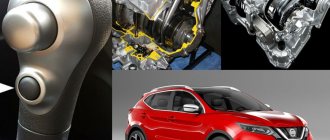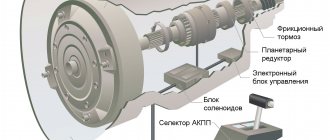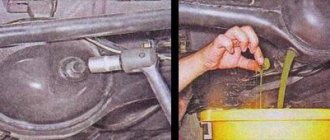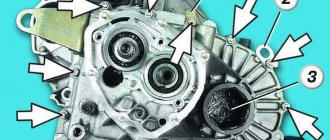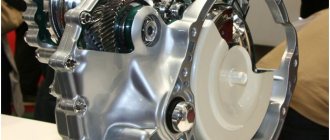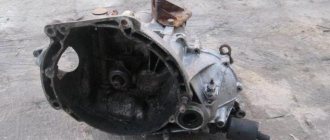01/26/2022 21,496 checkpoints
Author: Ivan Baranov
Recently, more and more motorists are choosing vehicles equipped with a CVT transmission. We talked about the operation of this type of gearbox earlier, but many car owners today are interested in the question of how to warm up the variator in winter. In this article we will try to answer it as fully as possible.
[Hide]
Behavior of the variator in cold weather
The design of the variator is quite complex. Inside there are quite a lot of moving and not so moving components made of different materials. Their structure changes under the influence of meteorological factors. A special liquid flows between all elements. You can call the variator channel similar to the human circulatory system - its volume is equal to the capacity of blood circulating throughout our body. And all this is controlled by a microcomputer, which is sometimes called the heart.
When the temperature goes below zero, the liquid thickens and begins to flow more slowly through the variator. Just as a person feels chilly due to decreased blood flow, the variator units experience increased load on them due to decreased lubrication.
At the same time, rubber components are also tanned. Rubber weakly resists tension and compression, which leads to destruction and premature wear. Already at minus 15, the variator begins to make shocks when starting in cold conditions. Difficulties arise when switching to Drive mode. And in severe years it may not start at all. The exception is for cars from garages or with scheduled heating activated.
In any case, warming up the CVT transmission is a strategic necessity. However, the methodological aspects of the process are still the subject of debate between car enthusiasts of different cultures and generations. It is definitely worth rejecting the classical methods of warming up other types of gearboxes due to their unacceptability.
Basic mistakes when driving a CVT
When driving a car with a CVT transmission, many people make mistakes, which leads to premature damage to the automatic transmission and the need for its repair.
Sharp acceleration and high speed
CVT gearboxes are more suitable for drivers focused on a calm driving mode without sudden acceleration and pressing the brake. The peculiarity is that a rapid increase in speed leads to slippage of the pulley, and subsequently to an increase in operating temperature and damage to the unit.
Similar consequences are possible with frequent and sharp pressure on the brake. In this case, the bearings may heat up.
Off-road driving
Traveling on bad roads increases the likelihood of slipping, and this factor is negative for the variator. The consequences of such operation are the same as with a sudden start of movement - wear and excessive heating of the pulley.
If you have to drive onto a bad road, you need to stick to a low speed.
Improper transportation of trailers and vehicles
The manual for cars with CVT states that the main purpose is to transport luggage and passengers. The peculiarity is that there is no ban on towing. If you still need to use a trailer, it is important to take into account the technical characteristics of the car.
The main thing is that the tow hitch with cargo weighs less than the maximum value. The driving speed when operating on any roads is limited to 70 and 90 km/h in the city and outside it, respectively.
Improper towing of a vehicle with a CVT
Towing errors during operation often lead to damage to the variator. If you need to transport a car with a CVT, it is better to call a tow truck, because towing it is useless.
If this is not possible, it is allowed to tow a car for no more than 50 km, provided that the engine is running, the selector is in the “N” position, and the speed is up to 50 km/h.
Warm-up techniques
Warming up while moving
You can start the movement immediately without warming up. But it is important to follow certain rules. You need to start and brake smoothly, without accelerating at high speeds. Then the variator will warm up faster and more smoothly. Similar tactics can be used when leaving the yard. During the distance from the garage to the free street, the variator will have time to warm up. It’s also a plus for residents of settlements with rail and air crossings (there are some, but they’re rare. The most famous is Gibraltar. Author’s note). The main thing is to wedge into the flow at low speed just before closing or immediately after opening.

